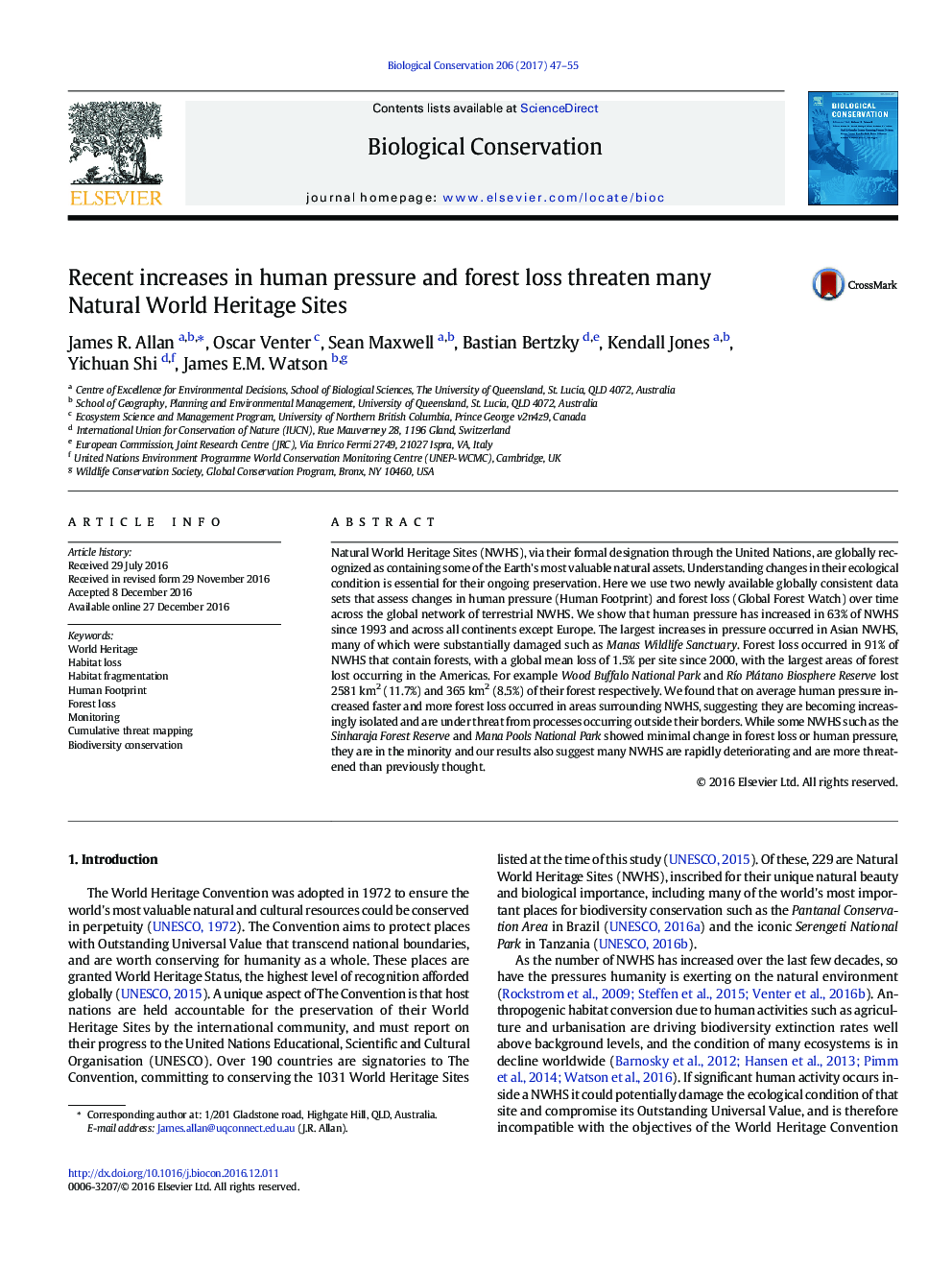| کد مقاله | کد نشریه | سال انتشار | مقاله انگلیسی | نسخه تمام متن |
|---|---|---|---|---|
| 5743269 | 1617896 | 2017 | 9 صفحه PDF | دانلود رایگان |
- This is the first global quantitative assessment of how humanity is negatively affecting Natural World Heritage Sites (NWHS).
- Increases in human pressure and forest loss are occurring across the vast majority of forested NWHS.
- NWHS are becoming isolated by substantial increases in human pressure and forest loss in the landscapes surrounding them.
- We provide crucial baseline information which is neccessary for the ongoing preservation of NWHS.
Natural World Heritage Sites (NWHS), via their formal designation through the United Nations, are globally recognized as containing some of the Earth's most valuable natural assets. Understanding changes in their ecological condition is essential for their ongoing preservation. Here we use two newly available globally consistent data sets that assess changes in human pressure (Human Footprint) and forest loss (Global Forest Watch) over time across the global network of terrestrial NWHS. We show that human pressure has increased in 63% of NWHS since 1993 and across all continents except Europe. The largest increases in pressure occurred in Asian NWHS, many of which were substantially damaged such as Manas Wildlife Sanctuary. Forest loss occurred in 91% of NWHS that contain forests, with a global mean loss of 1.5% per site since 2000, with the largest areas of forest lost occurring in the Americas. For example Wood Buffalo National Park and RÃo Plátano Biosphere Reserve lost 2581Â km2 (11.7%) and 365Â km2 (8.5%) of their forest respectively. We found that on average human pressure increased faster and more forest loss occurred in areas surrounding NWHS, suggesting they are becoming increasingly isolated and are under threat from processes occurring outside their borders. While some NWHS such as the Sinharaja Forest Reserve and Mana Pools National Park showed minimal change in forest loss or human pressure, they are in the minority and our results also suggest many NWHS are rapidly deteriorating and are more threatened than previously thought.
Journal: Biological Conservation - Volume 206, February 2017, Pages 47-55
